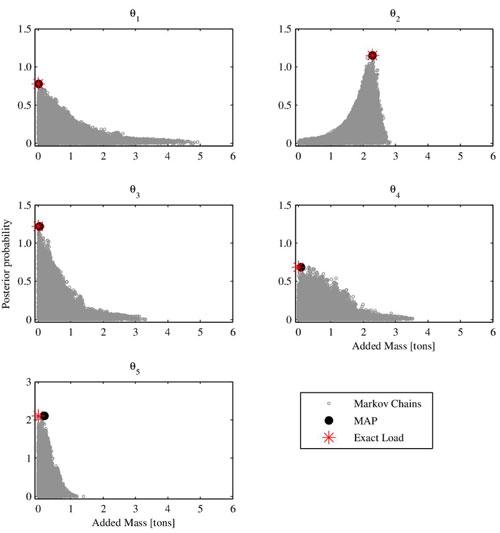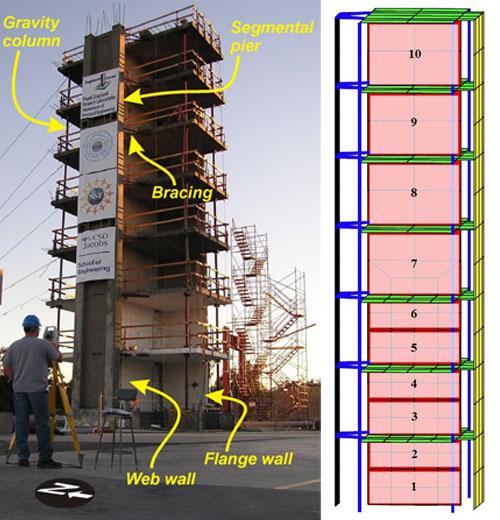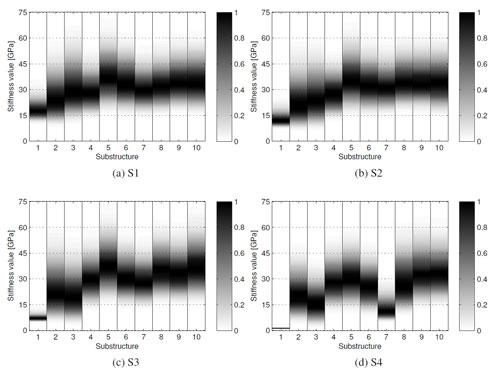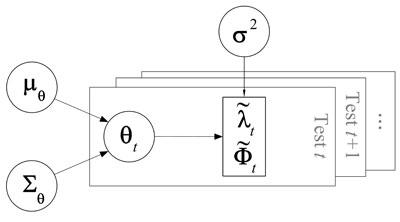Bayesian FE Model Updating
Research Team: Babak Moaveni (PI), Iman Behmanesh (grad student)
Funding: NSF-BRIGE (1125624)
Duration: 8/2011 – present
Relevant publications to date:
Behmanesh, I., and Moaveni, B. (2014). "Probabilistic identification of simulated damage on the Dowling Hall Footbridge through Bayesian FE model updating." Structural Control and Health Monitoring, in press (available online).
Behmanesh, I., Moaveni, B., and Papadimitriou, C. (2014). “Probabilistic damage identification of civil structures using modal data in the presence of modeling errors.” Journal of Engineering Mechanics, ASCE, under review.
Behmanesh, I., Moaveni, B., Lombaert, G., and Papadimitriou, C. (2014). “Hierarchical Bayesian model updating for structural identification.” Mechanical Systems and Signal Processing, under review.
Behmanesh, I., and Moaveni, B. (2014). “Bayesian FE model updating in the presence of modeling errors.” Proc. of 32nd International Conference on Modal Analysis (IMAC-XXXII), Orlando, Florida, USA.
Behmanesh, I., and Moaveni, B. (2013). “Uncertainty analysis of FE model updating results through a Bayesian inference scheme.” Proc. of 11th International Conference on Structural Safety and & Reliability (ICOSSAR), New York, New York, USA.
Behmanesh, I., and Moaveni, B. (2013). “Probabilistic damage identification of the Dowling Hall Footbridge using Bayesian FE model updating.” Proc. of 31st International Modal Analysis Conference (IMAC-XXXI), Garden Grove, California, USA.
This project includes the following sub-topics:
1. Application of Bayesian Model Updating for Damage Identification of Large-Scale Structures
Probabilistic damage identification studies are performed on two large-scale structures, namely (1) the Dowling Hall Footbridge, and (2) a seven-story shear wall structure.
Dowling Hall Footbridge: In this study, effects of physical damage are simulated by loading a small segment of the footbridge deck with concrete blocks. The footbridge deck is divided into five segments in a FE model of the test structure and the added mass on each segment is considered as an updating parameter. Overall, 72 sets of data are collected during the loading period and different subsets of these data are used to find the location and extent of the damage (added mass). The Adaptive Metropolis-Hastings algorithm with adaption on the proposal probability density function is successfully used to generate Markov Chains for sampling the posterior probability distributions of the five updating parameters. Effects of the number of data sets used in the identification process are investigated on the posterior probability distributions of the updating parameters. The probabilistic model updating framework accurately predicts the simulated damage and the level of confidence on the obtained results. The probabilistic damage identification results are found to be in good agreement with their corresponding deterministic counterparts.
Figure 1. Added mass on the bridge to simulate damage (left) and location of sensors on the bridge (right)
Figure 2. Updating parameters are added mass on five substructures (exact location of added mass is on substructure 2)
Figure 3. Distribution of samples and their posterior probability densities for the five updating parameters
Seven-story Shear Wall Structure: A Bayesian finite element (FE) model updating is applied for uncertainty quantification in the vibration-based damage assessment of a seven-story reinforced concrete building slice. This structure was built and tested at full scale on the USCD-NEES shake table; a progressive damage pattern was induced by subjecting the structure to a number of historical earthquake records. At each damage stage, modal characteristics such as natural frequencies and mode shapes were determined through vibration testing; these data are used in the Bayesian FE model updating schemes. In order to analyze the results of the Bayesian scheme and gain insight into what information is contained in the data, a comprehensive uncertainty and resolution analysis is proposed and applied to the seven-story test case. It is shown that the Bayesian UQ approach and subsequent resolution analysis are effective in assessing uncertainty in FE model updating. Furthermore, it is demonstrated that insight into the Bayesian FE model updating approach provides a very natural way to regularize its often ill-posed deterministic counterpart.
Figure 4. Test structure (left) and the FE model with the 10 substructures with updating parameters.
Figure 5. Posterior distribution of stiffness at different substructures as contour plots for damage states S1 - S4
2. Bayesian Model Updating to Mitigate Effects of Modeling Errors
The validity and accuracy of identification results becomes questionable in the presence of large modeling errors which is common for large-scale complex civil structures. Modeling errors have unequal effects on different residuals (e.g., difference between identified and model-predicted modal parameters of different modes) used in the updating process. Therefore, the performance of FE model updating for damage identification is sensitive to the type and the subset of data used and to the residual weight factors. This study proposes a process to mitigate the effects of modeling errors by selecting the optimal subset of modal data and the modal residual weights. The sensitivity of the identified structural damages to the subsets of modal data and weight factors are taken into account by defining multiple model classes each with different subsets of modal data and different weight factors. Structural damage is then identified using Bayesian model class selection and model averaging techniques over the results of all the considered model classes. In addition, a new likelihood function is defined based on the difference between changes of modal parameters from the undamaged state to the damaged state so that damage can be identified using the initial FE model. In this case, there is no need to create the reference FE model. It is shown that the structural damages can be identified with negligible bias when the proposed likelihood is used for model updating. The performance of the proposed damage identification process using the new likelihood function is evaluated numerically at multiple levels of modeling errors and structural damages on the SAC 9-story steel moment frame.
Figure 6. Different levels of modeling errors in the SAC building (M0 is with no modeling error)
3. Hierarchical Bayesian Model Updating
A new updating technique based on Hierarchical Bayesian modeling is proposed for identification of civil structural systems under changing ambient/environmental conditions. The performance of the proposed technique is investigated for (1) uncertainty quantification of model updating parameters, and (2) probabilistic damage identification of the structural systems. Accurate estimation of the uncertainty in modeling parameters such as mass or stiffness is a challenging task. Several Bayesian model updating frameworks have been proposed in the literature that can successfully provide the “parameter estimation uncertainty” of model parameters with the assumption that there is no underlying inherent variability in the updating parameters. However, this assumption may not be valid for civil structures where structural mass and stiffness have inherent variability due to different sources of uncertainty such as changing ambient temperature, temperature gradient, wind speed, and traffic loads. Hierarchical Bayesian model updating is capable of predicting the overall uncertainty/variability of updating parameters by assuming time-variability of the underlying linear system. A general solution based on Gibbs Sampler is proposed to estimate the joint probability distributions of the updating parameters. The performance of the proposed Hierarchical approach is evaluated numerically for uncertainty quantification and damage identification of a 3-story shear building model. Effects of modeling errors and incomplete modal data are considered in the numerical study.
Figure 7. Graphical representation for the proposed Hierarchical Bayesian modeling






